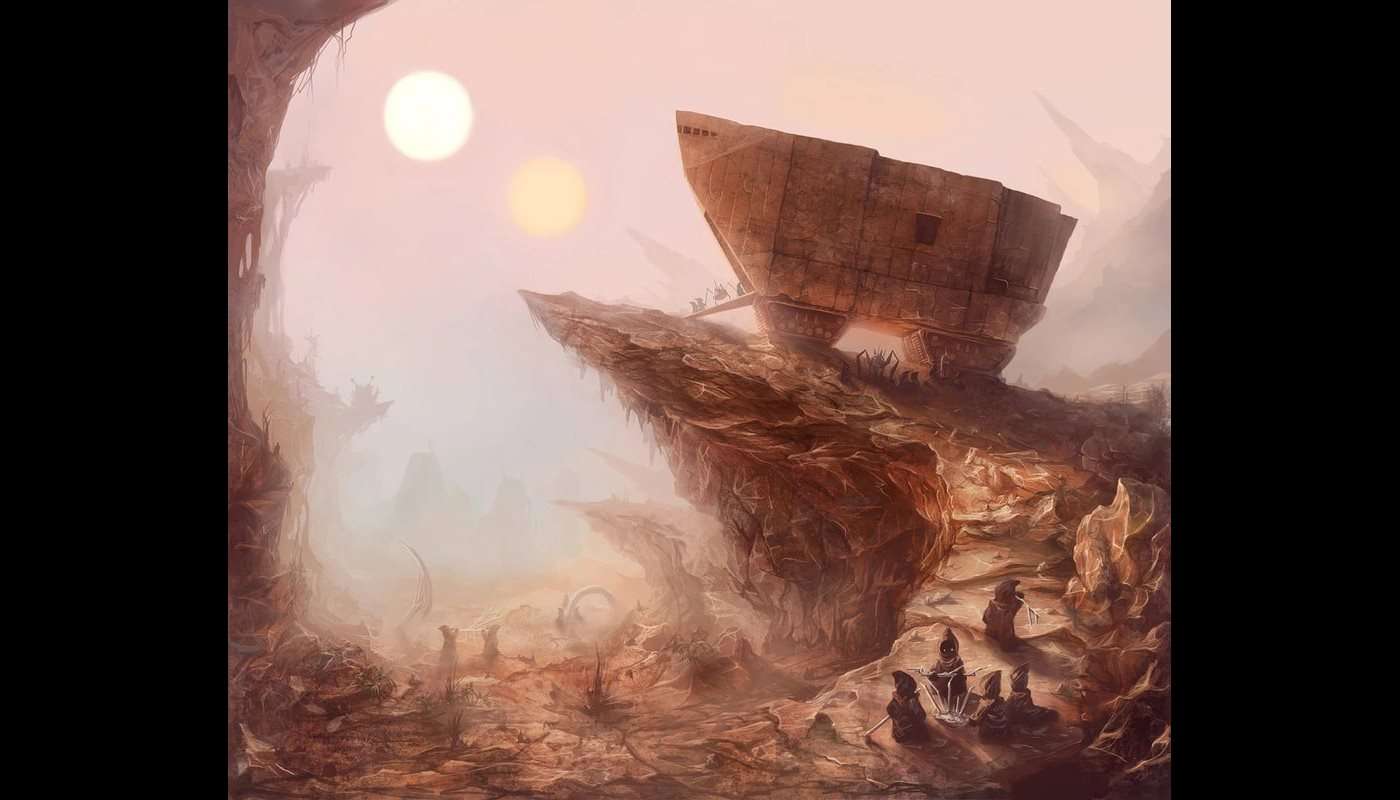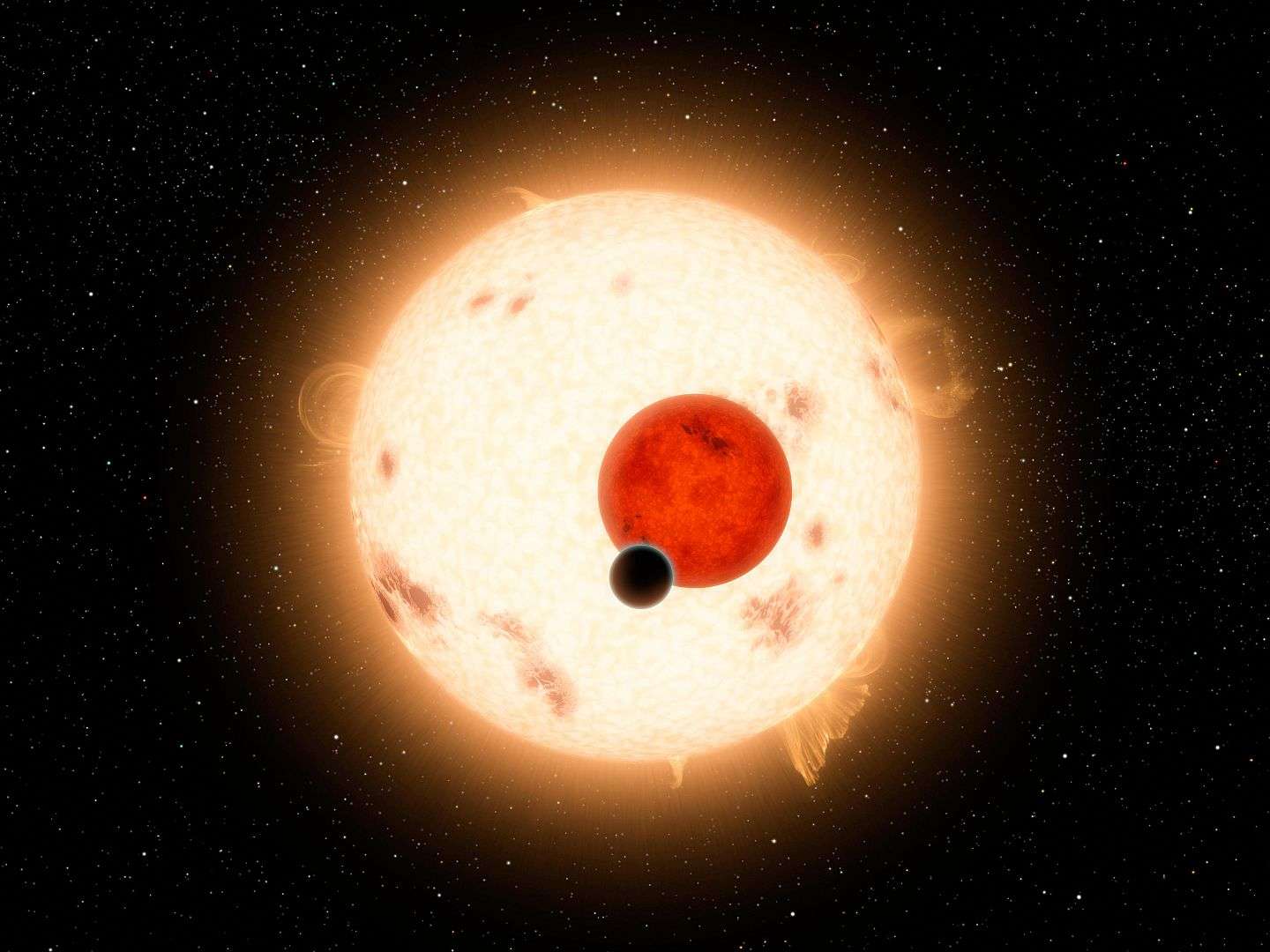Firefighting Drone Can Douse Wildfires From Above the Hillsides Where Firefighters Can't Go
In a demonstration video, a pile of burning roadside brush the size of a 4-door sedan was snuffed out by the jets in about 15 seconds.

A new solar system has been found where planets orbit two suns just like on Luke Skywalker's home planet in Star Wars.
It's the fifth multi-star system ever discovered, and the third one which features two stars.
Tatooine, the desert home planet of Luke and Anakin Skywalker was imagined as a desert world with two suns when Star Wars was first released in 1977. Fans would have to wait more than 30 years for the confirmation that such systems actually exist with the discovery of Kepler 16, a binary star system with a gas giant planet in orbit around them.
Now astronomers at the University of Birmingham have discovered another binary star system called BEBOP-1 after the project which funded its discovery-"Binaries Escorted By Orbiting Planets," or BEBOP.
Three years ago the Birmingham researchers Dr. Matthew Standing and Dr. Lalitha Sairam found that a planet, called TOI-1338b, orbiting these two suns had already been spotted by NASA's TESS (Transiting Exoplanet Space Surveyor) space telescope.
That planet was found using the transit method, meaning it was discovered when a telescope recorded the drop in perceived light coming from the host star every time the planet orbited in front of it. Over 5,000 exoplanets have been found since the first two were identified in 1992; most via the transit method.
They were able to register the planet's size, but not its mass. In the study of exoplanets, mass is the more important finding, as it can inform whether the planet is rocky or gaseous.
Using state-of-the-art instruments installed on two telescopes in the Atacama Desert in Chile, the team tried to measure the mass of TOI-1338b. Despite their best efforts following years of work, they could not achieve their goal, but instead discovered a second planet-BEBOP-1c-and measured its mass.

"BEBOP-1c has an orbital period of 215 days, and a mass 65 times larger than Earth, which is about five times less than Jupiter's mass," said Dr. Standing, lead author of the paper documenting its discovery. This likely indicates it's a gas giant.
At the moment only two planets are known in the BEBOP-1 system-what are known as ‘circumbinary planets,' but more might be discovered in the future with repeat observations, the research team said.
Although rare, circumbinary planets are important in pushing the understanding of what happens when a planet is created, according to scientists.
Discovered by the Kepler Space Telescope, several star systems in the constellation Cygnus have two stars and were the first to excite Star Wars fans. Kepler 16b, also a gas giant, was quickly dubbed "the Real Tatooine," while a different star system designated Kepler 35, not only has a gas giant, but estimations believe there could be two rocky worlds sitting in the system's habitable zone where the radiation and temperature are not too hot and not too cold.
Additionally, astronomers found a triple-star system in 2016 using a new instrument at the European Southern Observatory's Very Large Telescope. A planet found there called HD 131399A(b), is one of the strangest ever found-8 times the size of our solar system's largest planet Jupiter, and which orbits via the influence of all three stars in the system; taking 550 Earth years to finish a single revolution.
"I like to start thinking about it from when the planet is opposite all three stars," Kevin Wagner, an astronomer at the University of Arizona who helped the discovery, told Gizmodo at the time.
"When they aren't eclipsing, you'd see three suns in the sky. As the planet progresses in its orbit, the stars will start to grow apart, to the point where the setting of one coincides with the rising of another."
In essence, writes the Gizmodo author, you'd have two seasons: one with three sunrises and sunsets every day, and another of perpetual daylight, where a rising star (or stellar pair) is always there to replace a setting one.
Not that anyone or anything could live on that world-being as far away from its star(s) as Pluto is to the sun, and made of gas.
SHARE The Science Behind Star Wars' Tatooine With Your Friends…
Be the first to comment